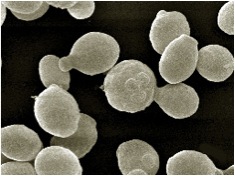
Pichiastipitis(Image by Thomas Kuster, USDA, Forest Products Laboratory.)
The dramatic shift in sequencing technologies that allows genome researchers to generate the equivalent of a single human genome in days rather than the decades it took multiple organizations to complete a single one has also shifted the bottleneck from sequence production to sequence assembly. For example, the Sanger platform routinely produced reads 700 basepairs long while the Illumina platform generates reads 35-100 basepairs in length, making the assembly process challenging DOE JGI researchers led by Eukaryote Program head Dan Rokhsar and Jarrod Chapman, have developed an efficient way to do short-read assemblies of eukaryotic genomes using a computer algorithm referred to as meraculous.